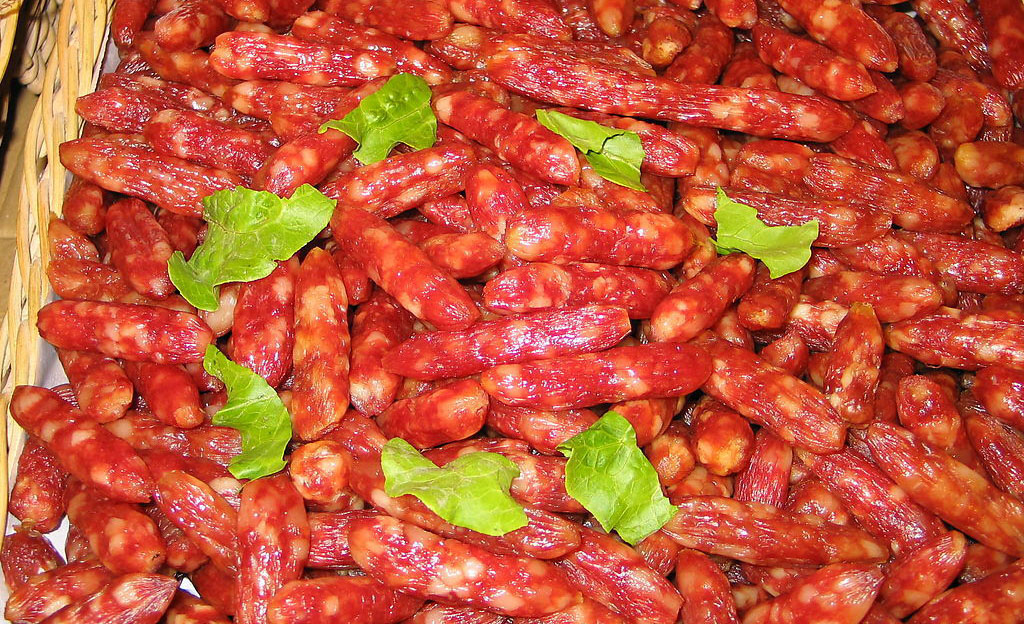GUANGDONG KELONG BIOTECHNOLOGY CO., LTD.
Add: No.5-17 and No.5-32, South area of Qibao Industry and Trade, Huicheng, Xinhui, Jiangmen, Guangdong, China
Tel:+86-750-6978788
Fax:+86-750-6978868
Wechat: 13828063050
Website: http://www.kelongbio.com
Email: export@kelongbio.com
marketing@kelongbio.com

Monascus red pigment is one of the most important natural pigments in China. As a natural one, it has the disadvantage of weak light and thermal stability. Monascus red pigment monomer is easily oxidized and faded in the air. In order to improve the photothermal stability of red yeast red, in the production process, peptone and peptide substances must be added for protection during extraction. In the past, due to cost and technical reasons, domestic producers added peptone to the extraction process. Peptone is obtained by enzymatic hydrolysis of animal bone material such as bovine bone, pig bone or sheep bone by high temperature and high pressure. Since the collection, transportation and storage of bones are prone to deterioration and pollution, peptone has not been included in the food additive standard GB2760. Our company is determined to make progress, pay attention to product safety, and strongly feel the safety hazard of using peptone. It has been completely changed to the soybean peptide allowed in the national standard and has the corresponding national standard last year. Soybean peptide is formed by hydrolysis of soybean protein isolate by protease. The raw material is pure and reliable, and its national standard is GB/T22492-2008. Moreover, the quality of the product of red yeast red is obviously improved, the product has no rotten smell of carrion caused by peptone, and the clear fragrance of soybean, the heat resistance and the light resistance of the pigment are obviously improved.
In order to better distinguish the two methods of producing red yeast red, the company invited domestic experts to demonstrate the identification method and use the identification method of soybean peptide and peptone products. The specific methods are as follows:
General: The common point of using soy peptides and peptone extract pigments is higher protein content (generally between 35% and 40%). The difference is that the pigment produced by soybean peptide does not contain saturated fatty acids and cholesterol, and the product has the fragrance of soybeans. Products made from peptone contain saturated fatty acids and cholesterol, and have the inherent odor of peptone.
Identification:
1. Odor: The red yeast red product extracted by the soybean peptide process has a light odor and a light yellow soybean fragrance; the red yeast red product extracted by the peptone process has a heavy odor and a rotten smell of rotten meat.
2, protein content (%): each process contains protein, about 35% ~ 40%. The detection method refers to GB/T5009.5-2010 "Determination of Protein in Food".
3, thermal stability (residual rate)%: 1 color valence red yeast red aqueous solution in a 10ml colorimetric tube, disinfected in a 121 ° C disinfection pot for 15min, and then measured color price in 722 spectrophotometer, this color price and The ratio of the primary color price is the residual rate. The soy peptide process has an increase in thermal stability of about 8% to 10% over the peptone process (the amount of the high-temperature product can be appropriately reduced and the cost can be reduced).
4. Saturated fatty acids: Plant proteins do not contain saturated fatty acids, and the products of the solid soy peptide process are not saturated with fatty acids. The test method refers to GB/T22223-2008 "Determination of total fat, saturated fat (acid), unsaturated fat (acid) in foods, hydrolysis extraction - gas chromatography".
5. Cholesterol: Plant protein does not contain cholesterol. The product of the solid soy peptide process has no cholesterol. For the detection method, refer to GB/T22220-2008 "Determination of Cholesterol in Foods by High Performance Liquid Chromatography".